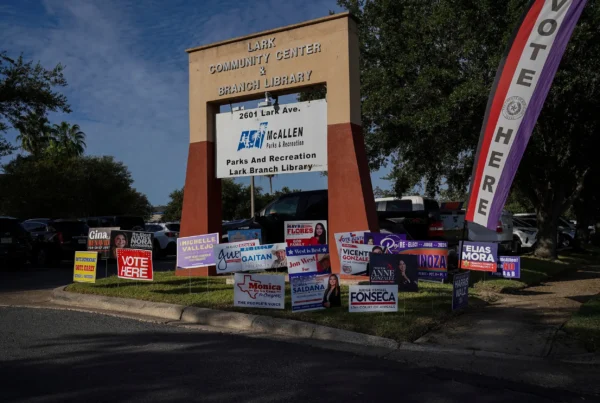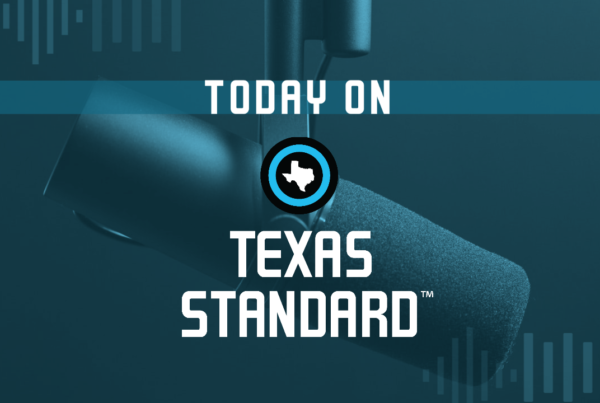Remember the real estate crash of the early 2000s? Some people in Texas were able to take advantage and buy their first house or an even bigger home.
Christopher Brown took a different approach to the market downturn: He bought an empty lot full of litter and debris at an industrial section of Austin. Not the likeliest site for a home, but he’d become fascinated with these kinds of abandoned spaces on the urban fringes – places once used, but seemingly spent, awaiting redevelopment.
That purchase led to a 20-year project to live in and document such spaces. And that journey of discovery and rediscovery is told in his new book, “A Natural History of Empty Lots: Field Notes from Urban Edgelands, Back Alleys and Other Wild Places.”
Brown joined the Standard to share more about the project.
This transcript has been edited lightly for clarity:
Texas Standard: Let’s begin with your experience. I don’t think many people would think to buy one of these rundown plots of land. We’ve all seen them – and I think some folks may be turned off by the location or the appearance, or intimidated by the investment it might take to make it usable. What were you thinking when you bought that plot of land?
Christopher Brown: I was looking for a way to find how to live next to really wild spaces without leaving the city. I had moved to Texas from the Midwest in the late 90s as a young dad, and roaming around, you know, Austin and other cities in Texas with my young son instead of like running out to the state parks three hours away, I was like, Why don’t we just look right here in town?
And we found all kinds of little pockets, you know, urban creeks and little empty lots and zones at the end of the dead end street that were full of all manner of wild plants and even animal life.
And so we got the idea to find a place like that we could live in. And the one I found happened to be in a weird sort of zone mix between an industrial corridor on one side and the floodplain of the Colorado River on the other. It was a classic Texas sort of empty lot bisected with a petroleum pipeline, complete with the valve box right in the middle.
And yeah, we set out with the sort of half-baked utopian idea to take this sort of blighted space and see if we could realize its potential to kind of return to being the Blackland Prairie it wanted to be and had surprising success.
You know, when I first heard about your book, what came immediately to mind were some of these places like some areas east of Houston, some areas I’ve seen in the Texas Golden Triangle – used to be, you know, really fancy areas, very expensive property. A lot of these spaces today post-industrial, I suppose.
I think, gosh, you don’t know what you’re getting into. I mean, years of industrial waste may be on the land. That sort of thing doesn’t scare you away?
I mean, it’s a little intimidating, I suppose, when you look at those places. But what I found when I moved to Texas and started exploring was that one, it had this really exceptionally bountiful and charismatic wild nature that I hadn’t experienced anywhere before.
And that counter-intuitively, even in places like Houston and like zones along Buffalo Bayou, east of downtown or in zones near downtown Dallas, that the worst kinds of most seemingly abusive industrial land uses had a kind of inadvertent benefit that they tended to keep out a lot of other human activity.
They were often located in places where there had always been all manner of wild nature. And so they created these kind of involuntary parks, if you will. And as long as there aren’t, you know, heavy toxins, which usually there aren’t – I mean, the safety protocols have gotten pretty good on that kind of stuff; you can do the testing you need to do.
And nature as those places evidence and as you find when you set out to kind of let nature really do its thing more deliberately with a little bit of stewardship, it’s capable of incredible resilience and healing those kinds of scars on the land.
» GET MORE NEWS FROM AROUND THE STATE: Sign up for Texas Standard’s weekly newsletters
I think that’s a big theme in this book. Before we go there, why a book? Why did you want to write about this?
Well, you know, I’m a novelist by background. I had written several novels set in Texas, and the landscape started finding its way in, even though the novels were mostly speculative fiction, you know, sort of mirror versions of the real world.
And I found that I was really interested in exploring this boundary that we create between urban space and nature, between human space and nature, and sort of challenging it and, you know, looking for ways to see that wild nature isn’t necessarily in this out-there wilderness of our imagination, but it’s really right around us in the interstices of our everyday life.
And to show people how they can experience that and reconnect with it – find, you know, enrichment in their own daily life and find agency to do things if they care about it, about helping to kind of rewild the future and tend to some of the environmental issues that I think we all sort of struggle with as we look forward.
Embracing these spaces, it seems to me, could be a job unto itself. I mean, it seems like you’d have to have a lot of time.
Well, it’s easier than doing regular yard work. I mean, I grew up an American lawn boy. And I moved to Texas where, you know, the municipality made me rake up all my leaves and put them in brown bags. And, you know, it’s what I spent my weekends doing for my first 10 years in Texas. And I was like, how about I let the yard go wild and actually do some ecological good at the same time?
And there are people doing it all over the state and really all over the country in different ecosystems. There’s a family named the Nieman family out in Junction. They have a place called Native American Seed where they go out and they find remnants of old prairie types and they use the techniques of production agriculture to let you mail-order bags of already mixed prairie seeds that you can put out in your yard.
And next thing you know, you’ll have something kind of like what the original settlers who came down here found. And you can do it in a very small space. And there are all kinds of resources available, and it’s fun. It really is a lot easier.
You have to try to control the invasive species, but, you know, you grow those plants, and then the bugs come and then the reptiles and amphibians and the birds and, you know, even the charismatic mammals – and right in the middle of town. And it’s really special to see the results.
And when enough people do it, it really starts to have an impact. You get this kind of archipelago of little pockets of wild nature – all these plants and animals are kind of network-based beings. And the impact can be really profound and really rapid.
And on a municipal scale, people are doing projects like the restoration of Buffalo Bayou or the Great Springs Project in Central Texas to connect all these historic trails and springs. The Bush Library in Dallas has a model kind of prairie restoration right on the roof.
There’s just all manner of projects that I think are showing the way that different people, depending on where they are and what they want to do, can achieve something like this. And, you know, yeah, people who love the land the way I think a lot of Texans do.















